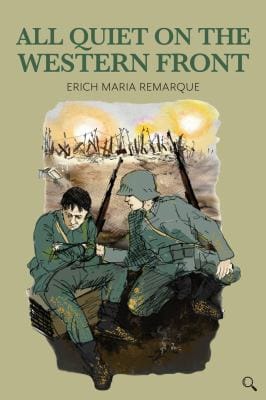All Quiet on the Western Front: A Timeless Anti-War Classic
Explore Erich Maria Remarque's All Quiet on the Western Front—its plot, themes, and relevance—through an 800-word, easy-to-parse review.

Introduction
Few novels capture the raw horror of combat and the emotional disintegration of soldiers as vividly as Erich Maria Remarque’s 1929 masterpiece, All Quiet on the Western Front. Set amid the muddy trenches of World War I, the book presents an uncompromising look at conflict from the viewpoint of ordinary German infantrymen. Nearly a century after its publication, the story of Paul Bäumer and his comrades still resonates, influencing countless war narratives and reminding readers of the true costs of nationalism, propaganda, and violence.
Historical Context
Remarque wrote the novel just over a decade after the Armistice, when Europe was still processing the unprecedented trauma of the Great War. Millions of soldiers had perished, empires collapsed, and the Treaty of Versailles sowed seeds of further unrest. Against this backdrop, the author—himself a wounded veteran—sought to strip away patriotic gloss and expose the frontline reality that governments preferred to forget. His candor prompted swift praise as well as censorship; the book was banned and burned by the Nazi regime in 1933, cementing its status as a powerful anti-war statement.
The Story in Brief
The narrative follows nineteen-year-old Paul Bäumer, who, along with his classmates, volunteers for the Imperial German Army after fiery speeches from a schoolteacher. Once at the front, patriotic fervor evaporates. Paul witnesses relentless shelling, hunger, rats, and senseless death. He bonds with older soldiers—Katczinsky, Müller, Kropp—forming a surrogate family that shields them, however fleetingly, from chaos. Each chapter tracks dwindling morale: training brutality, futile assaults, hospital wards filled with amputees, and the haunting return to civilian life on leave. Ultimately, Paul’s death occurs on a day the war report reads “All quiet on the Western Front,” underscoring the novel’s grim irony.
Major Themes
The Futility of War
Remarque dismantles notions of glory. Battles typically change little except body counts. When Paul stabs a French soldier in a shell hole and watches him die slowly, he recognizes their shared humanity and the pointlessness of their struggle.
Loss of Innocence
The young recruits enter the war as idealistic students; trench warfare rapidly matures them in grotesque ways. School books give way to rifles, and their worldview narrows to basic survival—food, sleep, and staying alive until the next bombardment.
Comradeship
Paradoxically, friendship flourishes amid carnage. The soldiers’ laughter over stolen geese or improvised meals offers a fragile refuge. Remarque depicts camaraderie as both coping mechanism and tragic bond, because those closest are often the next to die.
Alienation from Civilian Life
On leave, Paul finds his family unchanged while he feels irrevocably different. Civilians discuss the “great offensive” as if it were a sports match, exposing a chasm between those who fight and those who watch from afar.
Stylistic Features
Remarque’s prose is straightforward yet poetic, employing present-tense narration that drops readers directly into foxholes. Stark imagery—yellow boots splattered with blood, butterflies fluttering over corpses—contrasts beauty with horror. Short, clipped sentences mimic shell-shocked thought patterns, heightening authenticity.
Impact on Literature and Media
All Quiet on the Western Front pioneered a wave of realistic war fiction, influencing authors from Joseph Heller to Tim O’Brien. The 1930 film adaptation won the Academy Award for Best Picture, while the 2022 German-language reboot introduced the tale to a new generation via streaming platforms. Each version preserves Remarque’s uncompromising message: war dehumanizes everyone.
Relevance Today
In an age of drone strikes and twenty-four-hour news cycles, the novel’s intimate focus on foot soldiers remains crucial. Conflicts in Ukraine, Syria, and elsewhere demonstrate that technology may evolve, but the human toll of war persists. Reading Paul’s story encourages empathy beyond national borders and challenges political leaders to weigh rhetoric against lived experience.
Reading Tips
To fully appreciate the book, consider pairing it with historical research on World War I—maps of the Western Front, photographs of trench systems, and soldiers’ diaries. Such context enriches understanding of battlefield terminology and strategies referenced throughout the text. A discussion group or classroom setting can also illuminate varied emotional responses, fostering deeper reflection on morality, duty, and loss.
Conclusion
All Quiet on the Western Front endures because it transcends time, nationality, and politics, speaking directly to the human soul. Remarque compels readers to feel mud underfoot and hear artillery screams, ensuring they cannot remain indifferent. Whether you are a history buff, literature enthusiast, or peace advocate, this novel offers an unforgettable journey into the heart of darkness—and a plea to prevent its repetition.



